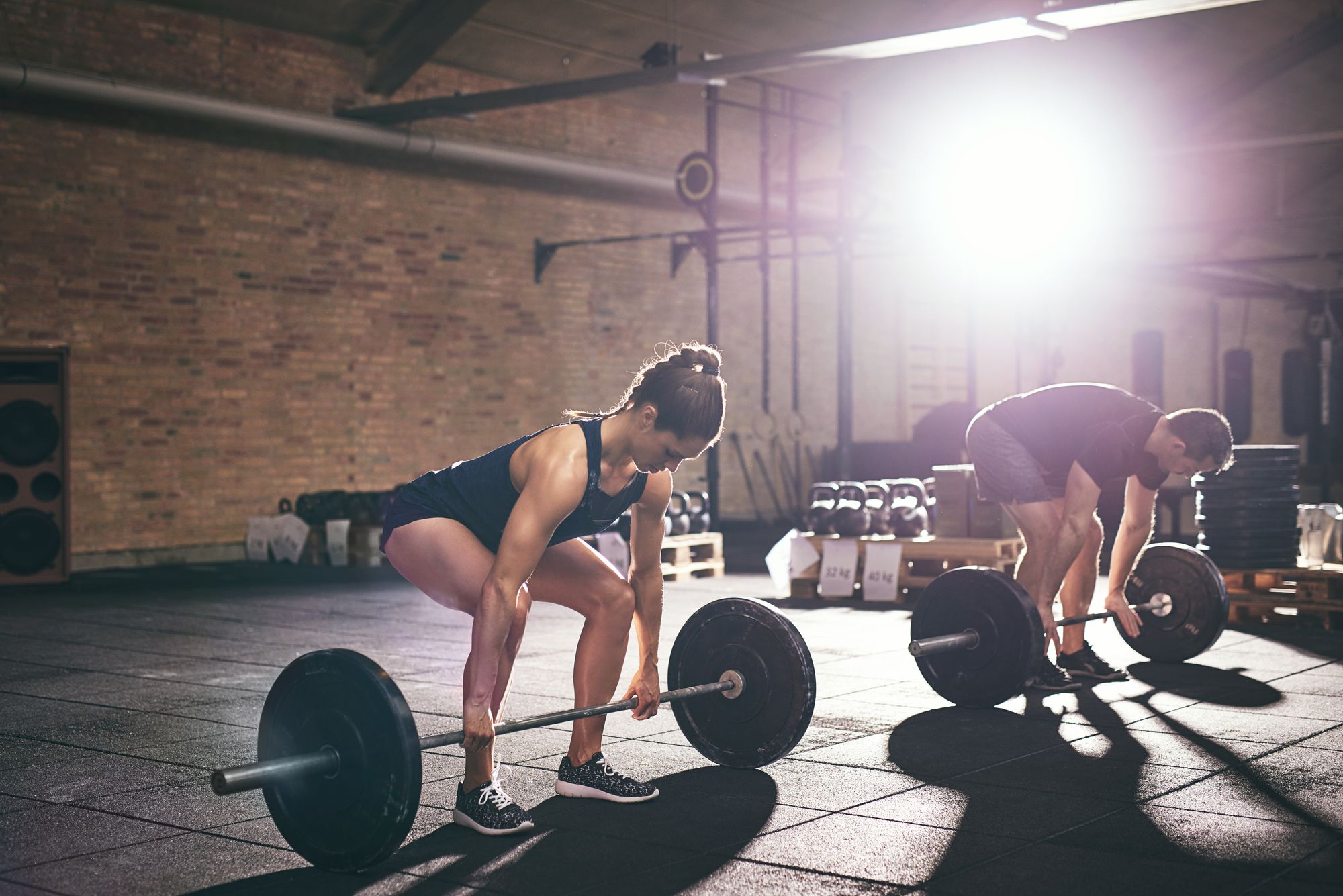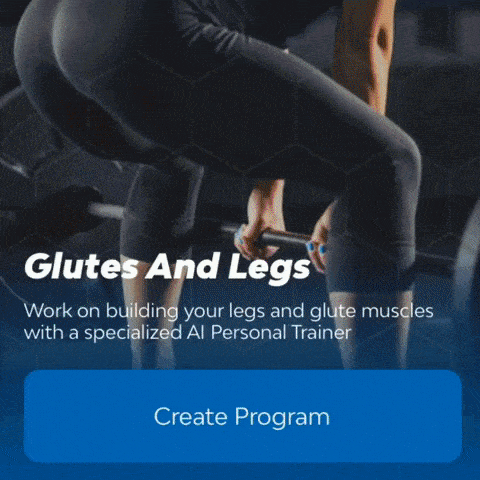The Top 3 Glute Exercises You’re Not Doing
Do you think that deadlifts and squats are all you ever need for a functional, perky butt? Well, if you do – you’re in for a rude awakening. In this article, we’ll explore why soreness doesn’t always lead to maximal muscle growth

Do you think that deadlifts and squats are all you ever need for a functional, perky butt??
Well, if you do – you’re in for a rude awakening. In this article, we’ll explore why soreness doesn’t always lead to maximal muscle growth and take you through the three glute exercises you need for your glutes.
But I feel sore after squats
Time and again, research shows that squats and deadlifts don't activate the glutes all that much; even if you feel sore the next day.
While soreness is a crucial indicator of muscular damage (and therefore muscle hypertrophy), it’s not the full picture. You’ve achieved optimum muscular hypertrophy through an exercise only when you experience both the “pump” and soreness. But – what produces the “pump”?
Only consistent tension on a particular muscle can produce the "pump," also known as occlusion, or hypoxia. And as you should know by now, squats and deadlifts certainly do not place consistent tension on your glutes. Circa: they're not the best exercises to work your glutes.

Why do I need my glutes again?
If your world just came crashing down because you've always 'built' your glutes with 200-pounds deadlifts, don't give up on training! The glutes play a critical role in pelvis stabilization.
Weak glutes – sometimes associated with too much sitting in a sedentary job – can lead to decreased stabilization and control. And that can set you for pain and potential injuries in the future. Now, you wouldn’t want that. Would you?
Excellent; I assume that you’re motivated to start properly working on your glutes. Undoubtedly, you’re now wondering about the best glute exercises you should do on your next lower body day. So – here they are.

You should do these glute exercises instead
#1 – Barbell Hip Thrusts
You must have seen people in the gym doing barbell hip thrusts by now. And if not barbell hip thrust, at least some variation of a hip thrust – be it at the smith machine or the leg extension machine. Unlike other popular, overrated exercises, science backs the barbell hip thrust's effectiveness on the glutes.
In a 2015 paper published in the Journal of Applied Biomechanics, a group of researchers (including Bret Contreras, famously known as "The Glute Guy") found that the barbell hip thrust activates the glutes to a higher degree than the back squat.
How to perform the barbell hip thrust
1. Load the barbell up with your desired weights. Be sure to put padding around the barbell to prevent it from digging into your hips when you thrust.
2. Place your upper back on the bench with the barbell across your hips.
3. Keep your feet planted firmly on the ground, close to your glutes.
4. Drive your hips upward, engaging your abs.
5. Hold for a count, then lower to the starting position.
Unfortunately, the barbell hip thrust ranks near the top when it comes to exercises that are frequently butchered via poor execution. So here are a few essential pointers to keep in mind when you're following the execution guide above.
· Push through the heels – This prevents the shifting of tension away from your glutes, towards your quads.
· Keep shins perpendicular to the ground – If your feet are too far away from or close to your butt, you’ll end up working your hamstring and quadriceps more, respectively.
· Maintain posterior pelvic tilt – This prevents hyperextension of your lower spine, which can be detrimental to the spine over time.
· Tuck chin in– This better helps you with maintaining a posterior pelvic tilt and, therefore, also aids in long-term spinal health.
#2 – Romanian Deadlifts
As a variation of the traditional deadlift, the Romanian deadlift differs from the parent exercise through its ability to place more emphasis on the glutes. And it’s able to do so because you’d need to maintain relatively straight knees throughout the movement, thereby shifting constant tension to your glutes.
How to perform the Romanian deadlifts
1. Hold the barbell with an overhand grip, where your palms are facing down.
2. Stand with an upright torso, with feet shoulder-width apart. Your knees should be slightly bent. This is your starting position.
3. Bend at the waist to lower the barbell to over the top of your feet. Make sure to keep the knees stationary, and your back straight.
4. Keep going until you feel a big stretch on your hamstrings; this should occur around your mid-shin level.
5. Extend your hips and bring your torso back to its upright position such that you’re once again at the starting position. Squeeze your glutes tight at the end of the movement.

#3 – Bulgarian Split Squats
Last but not least, the Bulgarian split squat is an exercise that you need to incorporate into your glutes routine. Other than activating your glutes, this exercise also effectively targets the quadriceps, hamstrings, and even calves!
A 2010 study from the Journal of Sports Rehab found that the Bulgarian split squat more heavily involves the glutes, in comparison to the traditional back squats. Well, no surprise there – given the constant tension placed on the muscle group throughout the movement!
How to perform the Bulgarian split squat
1. Elevate your right foot on a bench and position yourself into a staggered stance (your left foot should be in front).
2. Hold a dumbbell in your hands and let them hang by the side of your body. This is your starting position.
3. Flex your front knee and hip to descend; this should feel like a lunge. Make sure that your front knee does not go past your front foot to prevent your quads from taking over.
4. Drive through your heel to push yourself back to the starting position.
Bottom line
And there you have it: the top 3 glute exercises you’re not currently doing (or are doing wrong). If your glutes are weak from years of inactivity or improper training, no worries – with a little bit of work, tweaks in your diet, and proper protein supplementation, your glutes will look more beautiful than they ever did before. And be even more functional, as well!
If you’re still unsure of the proper execution for the glute exercises we’ve covered in this article, you should download GymStreak; the app’s comprehensive database of exercises and their respective 360 degrees’ animations allow you to examine the correct form from all angles through its augmented reality function. You’ll never need to wonder what the posterior pelvic tilt looks like, ever again!

References
Andersen, V., Fimland, M., Brennset, O., Haslestad, L., S Lundteigen, M., Skalleberg, K., & Saeterbakken, A. (2014). Muscle Activation and Strength in Squat and Bulgarian Squat on Stable and Unstable Surface. International Journal of Sports Medicine, 35. https://doi.org/10.1055/s-0034-1382016
Contreras, B., Vigotsky, A., Schoenfeld, B., Beardsley, C., & Cronin, J. (2015). A Comparison of Gluteus Maximus, Biceps Femoris, and Vastus Lateralis EMG Activity in the Back Squat and Barbell Hip Thrust Exercises. Journal of Applied Biomechanics, 31. https://doi.org/10.1123/jab.2014-0301
